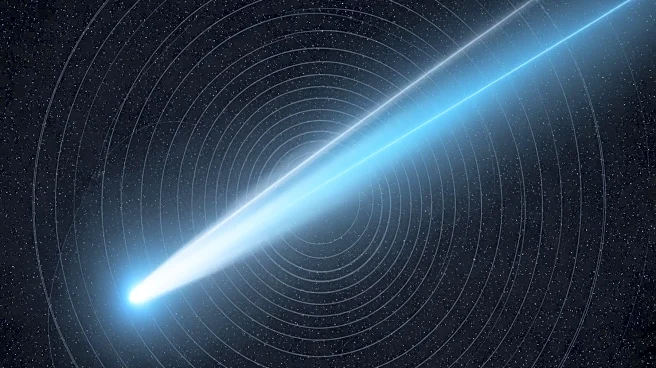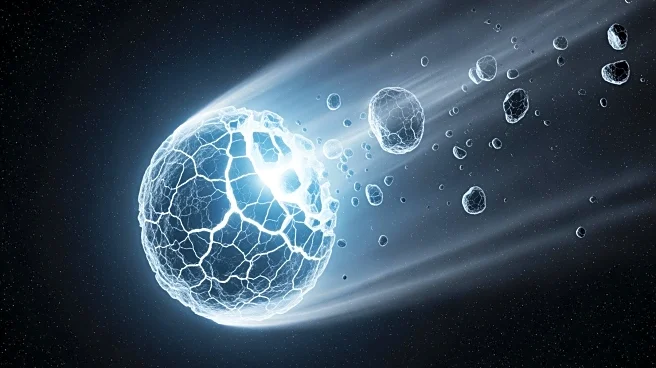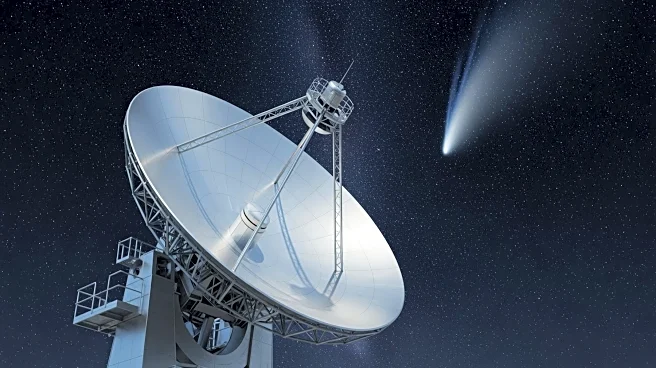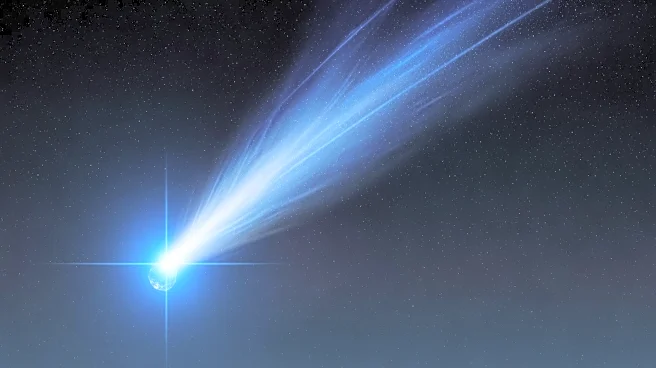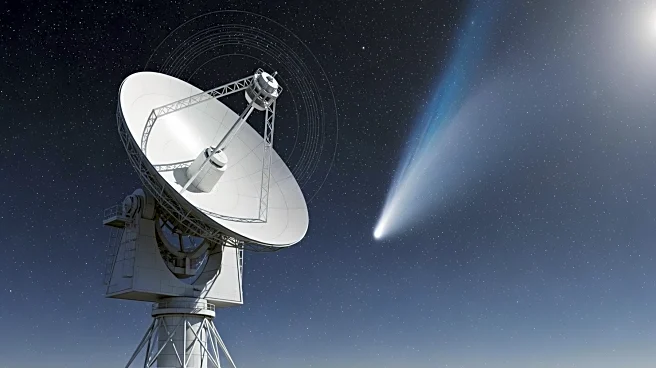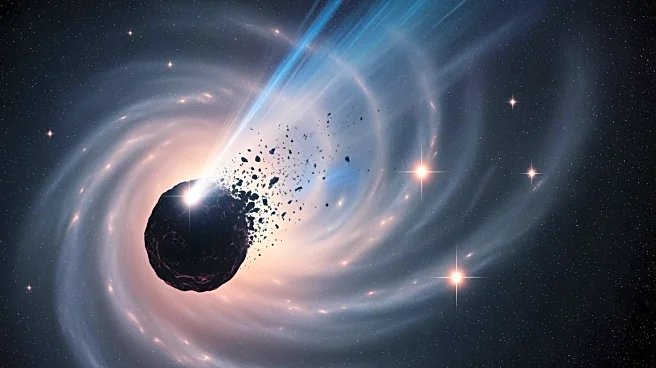What's Happening?
The interstellar comet 3I/ATLAS is displaying a growing ion tail as it reappears in the predawn sky following its perihelion passage. Recent images from the Virtual Telescope Project show the tail lengthening
and sharpening, indicating vigorous outgassing. Additionally, astronomers have confirmed the first radio detection from the comet, attributed to hydroxyl absorption, a sign of water being broken apart by sunlight. This evidence supports the interpretation of 3I/ATLAS as a natural comet rather than an extraterrestrial probe.
Why It's Important?
The observations of 3I/ATLAS provide valuable insights into the behavior of interstellar comets, which are rare visitors to our solar system. Understanding the characteristics of these comets can enhance our knowledge of planetary formation and the distribution of materials in the universe. The confirmation of natural cometary behavior dispels speculation about alien technology and reinforces the importance of scientific evidence in understanding celestial phenomena. The study of 3I/ATLAS contributes to the broader field of astronomy by offering a unique opportunity to compare extraterrestrial materials with those found in our solar system.
What's Next?
Astronomers will continue to track 3I/ATLAS as it moves through the solar system, using telescopes and spacecraft to gather more data. ESA's JUICE spacecraft is conducting observations throughout November, with data expected in early 2026. The comet's trajectory will be monitored to study its interaction with solar wind and its impact on the tail structure. These observations will help refine models of cometary behavior and contribute to the ongoing study of interstellar objects.
Beyond the Headlines
The study of 3I/ATLAS also highlights the importance of international collaboration in astronomy. Observations from various telescopes and research institutions around the world are crucial for building a comprehensive understanding of interstellar comets. This collaborative approach not only advances scientific knowledge but also fosters global cooperation in the pursuit of understanding the universe.



